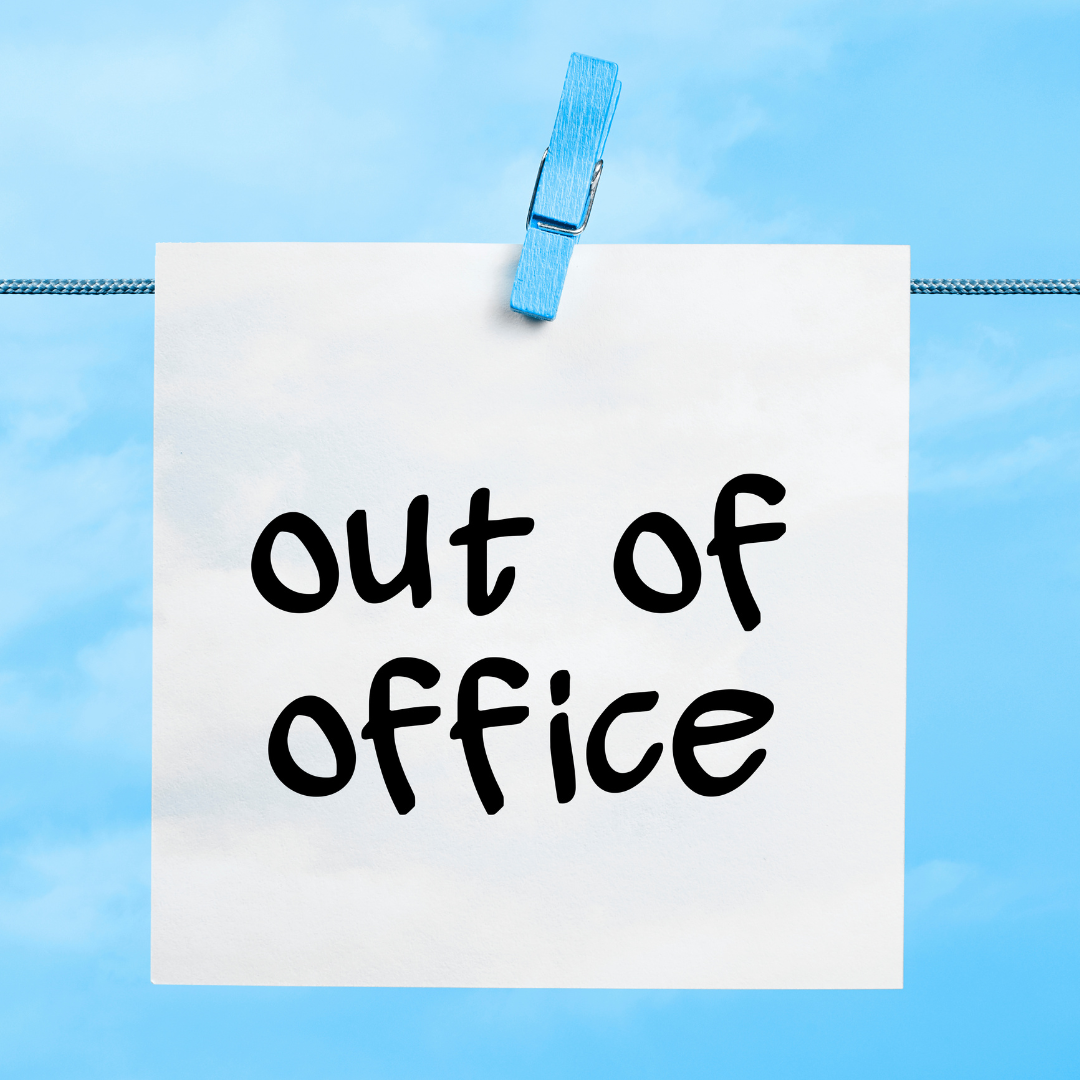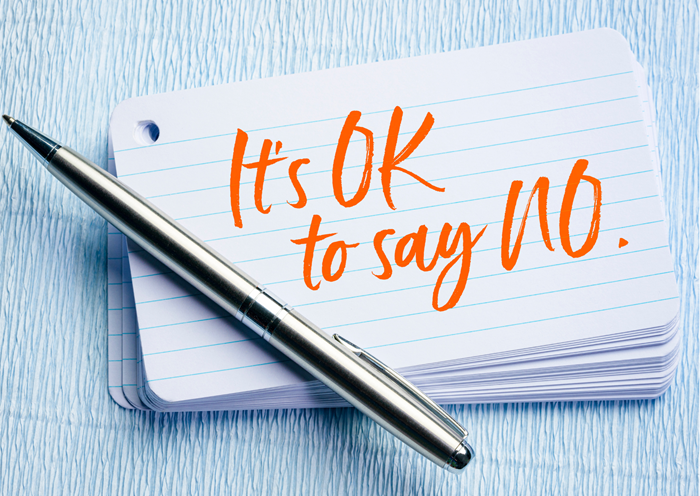Travel Zen: How to Stay Organized Before, During, and After Your Trip
With the travel and holiday season in full swing in India, many of us are gearing up for exciting adventures and much-needed breaks. Whether you’re planning a relaxing beach getaway, an adventurous mountain trek, or a cultural city tour, being organized can make your travel experience smooth and enjoyable. Here’s a guide to help you stay organized before, during, and after your trip.
BEFORE YOUR TRIP:
- Create a Mind Map: Start by breaking down your travel goal into manageable preparatory actions well in advance. Visualize your trip in detail, from booking flights and accommodations to planning activities and packing essentials. For example, if you’re visiting the Gir Forest in Gujarat, include steps like booking safari tickets in advance and planning your sightseeing itinerary. This holistic approach ensures nothing slips through the cracks. You may want to review the places to visit and choose your candidates so that you can make the right use of your time there.
- Compile a To-Do List: Consistently review and update this list to track your progress and stay on top of tasks. Early preparation can reduce last-minute stress and help you feel more organized and ready for your adventure. For instance, if you’re traveling abroad, check the visa requirements, or if you need specific items like good sneakers or a swimming costume, add them to your list.
- Develop a Packing Checklist: Maintain multiple variations of a comprehensive travel packing checklist tailored for different types of trips, such as business or vacation, flight or car travel, visiting relatives, or staying in a five-star accommodation. These lists should include everything from clothing and toiletries to travel documents and gadgets. Checking off items as you pack ensures you don’t forget anything important, giving you peace of mind. For example, for a beach vacation, your checklist might include swimsuits, sunscreen, beach towels, and snorkeling gear. Reviewing such a checklist early can help identify additional tasks for your to-do list.
DURING YOUR TRIP:
- Immerse Yourself in Leisure: Fully enjoy your time away, immersing yourself in relaxation and new experiences. However, keep a quick list handy to jot down any new tasks, work-related thoughts, or creative ideas that may come to mind. This helps prevent your mind from constantly drifting back to work. Using a note-taking app like Google Keep handy will make it easy to do so. For example, if you suddenly think of a great idea for a work project while lounging by the pool, jot it down quickly so you can revisit it later without interrupting your relaxation. Check out more details here.
- Stay Flexible: Embrace spontaneity and be open to new opportunities that may arise during your trip. Sometimes the best experiences come from unexpected moments. Whether it’s trying a local delicacy, joining a cultural event, or taking a detour to explore a hidden gem, staying flexible adds a sense of adventure to your journey.
AFTER YOUR TRIP:
- Organize Your Memories: Once you’re back, take time to organize and store all your photos and videos. Collect, filter, and archive them in designated folders or platforms for easy access and future reference. For example, you could create folders labeled by date and location on your computer or upload them to a cloud service like Google Photos or Dropbox. This not only helps preserve your memories but also makes it easy to share your travel stories with friends and family.
- Reflect: As you return from your journey, take some time to reflect on your experiences. Reflecting on your travels not only helps preserve memories but also contributes to better planning for future adventures.
- Consider writing a travelogue to capture the highlights of your trip and document any new insights gained.
- This is also an excellent opportunity to update your travel packing checklist based on what worked well and what you may have missed.
- You may want to review your expenses.
By following these steps, you can make your travel experience more enjoyable and stress-free, ensuring you’re well-prepared before, fully present during, and efficiently organized after your trip.
Subscribe to my newsletter, to get tips like this and more, directly in your inbox!
(Originally published in Times of India on May 19, 2024)
Efficiency Unplugged: Strategies for Staying Efficient Away from the Office
In our professional lives, there are moments when we step away from our familiar work environments, whether due to business trips, unexpected health issues, or managing urgent responsibilities in diverse locations. These situations present unique challenges and opportunities for maintaining productivity.
Consider one of my clients, the head of security at a multinational cash-handling company. He frequently finds himself on the move, tracking down lost funds and addressing urgent matters across different locations. During our discussions, he shared the challenges he faces during these busy periods, including the impact on his focus and organizational efficiency.
Similarly, another client, a director overseeing multiple hospitals, experiences the demands of constant mobility. Whether overseeing construction projects, liaising with vendors, or setting up new facilities, he struggles to maintain organization and productivity outside his office. A single business trip can disrupt his routine, leaving him feeling disorganized and overwhelmed.
Reflecting on my own recent experience, I unexpectedly spent four days in the hospital due to a sudden stomach upset. While I was comfortable, being confined to a hospital bed kept me away from my usual work and routine life.
These events are part and parcel of our lives, and unless you have a good strategy to handle them, you may feel overwhelmed upon returning to the chaotic situation at work. Preparing before leaving the office, such as delegating responsibilities and setting up out-of-office replies, can help control affairs at work, but it may not prevent the overwhelm upon your return.
However, even a small time investment done daily while you are away could keep you confident and in control. Let’s explore some strategies:
- Keeping an eye on all your work sources: Stay updated with your emails, phone calls, and messaging apps. Whenever you have a spare moment, review your incoming messages and notifications. If you identify any actionable items, note them down in your to-do list immediately. For quick tasks that take less than two minutes to complete, address them right away to prevent them from piling up. If you receive a message or email that requires deeper understanding, avoid marking it as “unread” to remind you as it is not a foolproof mechanism. Instead, note down an action to revisit and carefully read the message when you have more time. By consistently investing a little time in managing your work sources, you’ll build an inventory of actionable tasks and stay on top of your responsibilities.
- Journaling: During your time away, maintain a journal (or continue maintaining your journal if you already do), to document your experiences, thoughts, and ideas. Regular journaling not only helps you reflect on your activities but also serves as a repository for valuable insights and action items. Whenever you jot down an idea or identify a task that needs attention upon your return, promptly add it to your to-do list. Journaling is a simple yet effective way to stay organized and ensure that important tasks are not overlooked amidst the distractions of being away from your regular work environment.
- Brainstorming: Utilize moments of solitude or downtime for brainstorming complex tasks or goals. Choose a specific project or objective that you’ve been grappling with and take the time to create a detailed mind map. As you brainstorm, you’ll likely gain clarity on the steps needed to move forward and identify actionable tasks to progress. Save your mind map digitally to ensure you don’t lose your insights. By leveraging these moments for focused brainstorming, you can make significant progress on challenging projects even while away from your usual work environment.
- Reading: Utilize e-book platforms like Kindle or Audible to access a library of books that you can read or listen to during downtime. Many of us lament not having enough time to read, but you’ll find that you have moments to spare while away. It’s surprising how a few minutes here and there can add up to meaningful reading time. Additionally, consider carrying one or two physical books as backup, especially in environments where electronic gadgets may not be permitted. Having reading material on hand ensures you can make the most of any downtime and expand your knowledge or enjoyment during your time away.
By implementing these strategies, you can maintain productivity and clarity even when away from your regular work environment.
Subscribe to my newsletter, to get tips like this and more, directly in your inbox!
A Comprehensive Guide to Marriage Preparation: From Planning to Execution
Preparing for a marriage event is akin to orchestrating a grand symphony, where every detail harmonizes to create a memorable experience. As hosts, navigating the complexities of planning can be both exhilarating and daunting. However, with meticulous planning, the journey towards a successful and stress-free event becomes not only manageable but also immensely rewarding. In this guide, we delve into the intricacies of marriage preparation, offering practical insights and tips to help you navigate through this enriching yet challenging endeavor:
- Choosing the Event Date – Time is a critical resource when planning a marriage event, akin to having a valuable asset at your disposal. While the event date is often influenced by various constraints, maximizing your control over time can lead to a smooth, stress-free, and memorable preparation period. With ample time on your side, you can make steady progress in your preparations without disrupting your daily routine.
Last year, when I advocated for an April wedding over January, it sparked disappointment among several family members. However, I recognized that opting for a stress-free marriage preparation required ample time. Leveraging weekends, I dedicated myself to wedding preparations while seamlessly managing gym sessions and work commitments throughout the week leading up to the wedding, ensuring minimal disruption to my daily routine. - Choosing the Event Venue – Having ample time not only provides you with a wide array of venue options but also allows you to select one that is conveniently close to your residence. Opting for a nearby venue facilitates easy commuting and logistics management. Once you finalize the venue, you can seamlessly proceed with planning other essential services such as decorations, lighting, catering, and more.
After shifting our wedding date from January to April, I was delighted to secure a stunning venue just an 8-minute drive from my home, a significant improvement from the initial 20-minute distance. - Prioritize Health Checkups – First things first! Addressing health concerns early not only ensures your well-being but also prevents last-minute disruptions. For instance, we had pending dental and eye checkups, and completing these procedures, including dental treatments and updating spectacles, well ahead of time relieved us of unnecessary stress, allowing us to focus wholeheartedly on marriage preparation.
- List the Rituals/Functions – Create a comprehensive list of all the rituals and functions to guide the outfit choices and the material requirements.
As a first-time host, I engaged in numerous discussions with experienced individuals to compile the rituals and meticulously plan each detail. This process not only provided clarity but also established subgoals to tackle methodically. - Shopping Preparation – Time also enables thorough shopping preparation for clothes, ornaments, gifts, and more. You should get on to shopping on the word go, so that you get enough time to get the right things. But, begin by creating a shopping plan, listing everything needed, specifying quantities and requirements for each item. Decide whether online purchases or visiting physical stores is preferable. Shopping becomes very optimized and organized activity, with such a plan in place.
Upon completing my shopping preparations, I meticulously documented a comprehensive list of shops to visit and the items to purchase at each, along with their respective quantities. This detailed inventory not only facilitated efficient in-store shopping but also streamlined the process of placing online orders, allowing me to strategize the sequence of purchases effectively. - To-do list Management – As you start working on several fronts, start maintaining a to-do list so as to utilize your time appropriately and execute actions based on priority. Maintain time sensitive tasks in the calendar so that you do not miss the dates. You may also have an independent list of articles that you want to shop for to track them specifically.
As the event date approaches, it’s essential to create a separate to-do list specifically for tasks during the event. This ensures that crucial tasks are not overlooked amidst the flurry of activities. - Budgeting – Establish a budget for the event and determine specific limits for each expense category to prevent having a big hole in your pocket. Utilize available standard budget templates from the internet, which often outline the typical allocation of expenses across various categories. Choose a template that aligns closely with your desired budget structure and adapt it to your specific needs. This approach helps maintain financial discipline and ensures effective expense management throughout your marriage preparation.
- Hiring an Event Planner – Delegation is the key for the self-preservation and it’s true here too. Hire an event planner who could coordinate all the vendors and activities during the event. They are experienced, know the trends and will help to get services from the reliable and cost effective vendors. This will also ensure that you are reasonably free during the event to attend to your guests and enjoy the function than worrying about the execution of the event.
Imagine how complex this write-up would have been, had I not hired an evet planner! - Guest List Management – At the outset, create multiple lists for guests as per your way categorization. I had just two lists – relatives and friends. Begin adding names as they come to mind, even if there’s a possibility of inviting them. Prior to sending invitations, review the lists and finalize who you wish to invite. Include a column for estimating the number of attendees against each of the guest and additional columns to track whether invitations were sent or if reminder calls were made.
This event presents an excellent networking opportunity, providing a chance to reconnect with friends and relatives. Allocate ample time to engage with them during invitation calls and plan introductions based on shared interests when they attend the event. This thoughtful approach fosters meaningful connections and enhances the overall experience for everyone involved. - Making Playlists – You may also want to start making playlists of songs to play during various functions as it takes time to fine tune them to your taste.
- Expense Tracking – Keep a record of expenses to ensure that you are in budget – As you start shopping and paying advances to vendors start recording them against those respective expense heads, so that you keep track of your payments and the budget.
- Home Organization – Arrange/secure stuff at few planned places at home – As you start procuring clothes, jewelry and other material, store them at appropriate places. Preferably, you would like to clear a cupboard so that most of the stuff stays together at one place. Maintain a small table in your record book, about “where is what”, so that you do not misplace things and then get disappointed at the time when they are needed. Maintain the same discipline as you pack things into your bags, to carry them to the marriage hall. You should precisely know what is kept in what bag.
A note on the tools required for planning: Managing numerous lists and tables in real-time can be incredibly cumbersome and prone to errors when done manually on paper. Therefore, I strongly advocate using a spreadsheet application. Such an app provides multiple tabs, each capable of hosting tables, offering a structured and organized approach to your planning process. Moreover, storing the spreadsheet on the cloud ensures constant accessibility from anywhere, allowing for seamless coordination and updates on the go.
By following these steps and utilizing your time effectively, you can ensure a well-planned and memorable marriage event, as I could 😊.
Subscribe to my newsletter, to get tips like this and more, directly in your inbox!
Seizing Missed Opportunities: Unleashing Productivity with Inbox and Sent Items Strategies
In today’s digital age, where every tool at our disposal can impact our productivity, it’s surprising how often we overlook the untapped potential of our Inbox and Sent Items folders of our email App. These communication channels are not just platforms for correspondence; they are goldmines of productivity waiting to be unearthed. In this blog post, we’ll explore two unconventional strategies to utilize your Inbox and Sent Items folders that can lead to remarkable improvements in your productivity.
Hack 1: Inbox – To-Do List integration
The first hack revolves around transforming your inbox into a productivity powerhouse. Imagine this scenario: it’s late at night, and you decide to check your email before heading to bed. You come across an important task buried in the sea of messages. Thinking you’ll remember to add it to your task list in the morning, you close the email and go to sleep. The next day, amidst the hustle and bustle of work, that crucial task slips your mind, only to resurface later as a missed opportunity or deadline. Although this is a common scenario, there are several ways by which we leave the work in mails and forget to act upon them. This hack will not only seal this leak but also make you a proactive professional.
Your inbox is more than just a repository of emails. You could also use it as a tool for organizing your pending work and tasks. Instead of letting emails pile up and create a sense of overwhelm, use your inbox strategically:
- Daily Inbox Dive: Start your day by diving into your inbox. Instead of skimming through emails, actively look for actionable items from the mails of just a day before. These could be tasks, deadlines, or requests that require your attention. Since you do this routine every day you will have to look at just one day only.
- To-Do List Integration: Integrate your inbox with your task management system. Add tasks obtained through the mails of Inbox, in your to-do list. This ensures that nothing falls through the cracks and all pending work is accounted for.
- Clearing Clutter: You could take this also as an opportunity to delete redundant mails and declutter your inbox. A clean inbox is not just visually pleasing; it also reduces mental clutter and improves focus.
Establishing a routine to go through emails from the previous day and collect to-do list items ensures that important tasks are not overlooked and allows you to frequently check mails, if you wish to stay on top of the communication.
Hack 2: Sent Items Reflection
While we often focus on incoming messages, the power of sent messages is often overlooked. Your sent messages represent completed tasks, commitments, and interactions. Here’s how to leverage them for productivity:
- Daily Sent Items Review: Set aside time each morning to review your sent messages from the previous day. Use your sent messages as prompts for journaling. Reflect on key interactions, lessons learned, and insights gained. Documenting these experiences not only enhances your personal growth but also serves as a valuable reference.
- PKM Enhancement: Update your Personal Knowledge Management (PKM) system with relevant information from your sent messages. This could include adding new contacts, recording decisions made, or capturing valuable knowledge shared.
By harnessing the power of sent messages for reflection and documentation, you not only enhance your productivity but also deepen your learning and growth journey.
Incorporating these unconventional strategies to leverage your Inbox and Sent Items can unlock the often missed opportunities for productivity improvement. By viewing your inbox as a dynamic to-do list and leveraging sent messages for reflection and documentation, you tap into a wealth of productivity potential. Seize these missed opportunities, unleash your productivity, and elevate your work and life efficiency.
Subscribe to my newsletter, to get tips like this and more, directly in your inbox!
Assertive Task Management: Using To-Do Lists to Say No Effectively
In a world where demands constantly pull us in different directions, mastering the art of saying “no” is a skill worth cultivating. But before diving into how to say no effectively, let’s first understand why and when one should say no to new tasks or responsibilities.
Saying no is an act of self-care. It’s essential to recognize that it’s okay to prioritize your well-being and goals. Letting go of tasks that don’t serve you allows you to focus on what truly matters and prevents burnout.
Consider this scenario: You’ve just started your workday, and your boss presents you with a critical task. You know there are others who could handle it, but you reluctantly accept. As the day progresses, you realize you’re already overwhelmed with tasks meant for you alone. You wish you had found a way to say no.
Another example from personal experience illustrates the complexity of decision-making when it comes to saying yes or no. Early in my career, a senior colleague approached me with a project outside my expertise. Despite warnings that I might be “used,” I accepted. Working together not only taught me valuable skills but also set me on a successful career path.
Clearly, determining when to say yes and when to say no isn’t easy. While it’s simple to prioritize what matters, it’s not always at the forefront of our minds. This is where a well-defined tool and process, like a to-do list, come into play.
A well-maintained to-do list serves as a compass in the chaos of everyday life. It provides clarity on goals and tasks, helping prioritize what truly matters. Here’s how it can empower you to confidently decline tasks or projects that don’t align with your goals:
- Capacity Awareness: Your to-do list helps you gauge your capacity realistically. When it’s already filled with important tasks, it’s easier to recognize when taking on something new would stretch you too thin. When faced with a new request, you can assess its impact on your current workload and communicate this effectively to your boss. This allows them to make an informed decision about task allocation, saving you from burnout and ensuring effective resource utilization.
- Clarity of Priorities: Maintaining a to-do list requires regular assessment and prioritization of goals. This ongoing review keeps you focused on tasks that move you closer to your objectives. When presented with new opportunities, you can quickly assess their alignment with your goals. Politely declining requests that don’t fit ensures you stay on track and preserves your time and energy for what truly matters.
In conclusion, a written and well-maintained to-do list becomes your ally in navigating the complexities of decision-making. Remember, saying no isn’t a rejection of opportunities; it’s a strategic choice to honor your priorities and preserve your well-being. By leveraging the power of your to-do list, you can confidently navigate the demands of work and life while staying true to your goals.
Subscribe to my newsletter, to get tips like this and more, directly in your inbox!
From Clutter to Clarity: Boosting Productivity Through Deletion
In today’s digital age, we often find ourselves overwhelmed by the constant influx of information, notifications, and digital distractions. Our digital spaces can quickly become cluttered, hindering our ability to focus, prioritize, and ultimately be productive. Decluttering your digital space allows you to remove distractions and create a focused environment. You get the following benefits when you delete stuff that you do not need anymore
- A cluttered digital environment can thwart quick access to vital materials, resulting in a significant blow to productivity. The inability to retrieve essential information promptly may lead to abandoning planned work or, at best, wasting valuable time searching for materials.
- Streamlining your digital space by removing visual and digital distractions enables a focused environment, promoting increased productivity and mental clarity.
- Despite the decreasing cost of digital storage, maintaining unnecessary data still incurs a hidden expense. Ask people who have run out of free space given by Google which they never thought they would.
Let’s explore the process of digital decluttering and how organizing and streamlining our digital lives can have a profound impact on productivity.
The key to effective decluttering lies in planning spaces for essential items. Once you organize all the useful artifacts into well-organized and planned spaces, you can easily and confidently get rid of the clutter left. Without such a system in place, it is difficult to draw a line between what is important and what is not. Let’s take an example. When you get an email or a message with information and documents, if you already have planned some folders on your computer for those artifacts, you would be able to extract that information and save it at the appropriate planned location and be able to delete the message or mail if it is inconsequential.
One common hurdle to decluttering is the perception of insufficient time, a valid concern. There are a few strategies to beat that:
- Delete material such as Email messages, SMS messages, or documents that are unwanted or whose purpose is met, while you are working on them. Another example would be that you may unsubscribe to newsletters that you don’t need anymore when you are looking at one. I call it a DRIFT (Do it RIght The First Time) policy. Do not accumulate trash till that sunny day when you think you have a whole world of time to delete unwanted material.
- Reserve brief routine time slots, such as when you wait for the elevator, during a commute, or that precious time slot in the loo, for deleting unwanted stuff, such as images, and videos on your phone. You may create a bunch of folders or albums in the gallery app of your mobile, such as selfies, family, friends, funny pics, funny videos, shopping, and good pics. What albums you create depends on what you want to retrieve. When you make a quick pass through what you have received, you move the things into those pre-created albums and delete the stuff you don’t ever need.
- With the above two strategies, you will retain less clutter but even when it gets accumulated over a long time becomes a task. And you will need a time slot to clear that stuff. You don’t have to set a fixed frequency to do that as that would be a little too artificial to get you enough motivated to take up. It should be one of your, what I call, “once in a while” routines. You could list down all such routines “on the back” of your to-do list to review and bring it to the to-do list, whenever you feel you have enough clutter to clear and also have some time at your hand, like a canceled meeting.
However, caution is crucial when deleting, as there’s a risk of accidentally discarding essential items. Leveraging digital recycle bins, offered by various apps and operating systems, provides a safety net. Creating recycle folders within important directories further mitigates the risk, allowing for secure storage until the certainty of disposal.
In conclusion, digital decluttering emerges as a potent tool for enhancing productivity in our digitally saturated lives. By actively organizing digital spaces and managing communication channels, we unlock improved focus, efficiency, and mental clarity. Embracing the principles of digital decluttering empowers individuals to harness the full potential of digital tools, fostering a more productive and streamlined digital existence.
Subscribe to my newsletter, to get tips like this and more, directly in your inbox!







